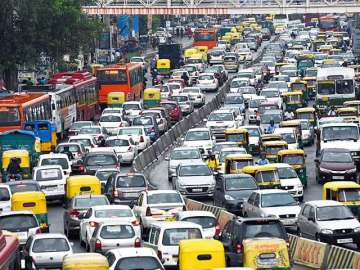New Delhi: After having proved effective in its first phase earlier in January this year, Delhi government’s road-rationing scheme odd-even has, however, failed to create similar impact in its second round.
According to a study conducted by School of Planning and Architecture (SPA), findings indicate that during phase II, number of private vehicles has gone up by 50% compared to phase I of the odd-even formula which aims to curb the air pollution level.
SPA carried out the research at major locations of the city that included Punjabi Bagh, Anand Vihar, Indraprastha, Ring Road (near Bhikaji Cama Place), Maharani Bagh, Mandir Marg, Gurgaon Expressway and Lodhi Road.
The share of private cars has increased by 36% and 41% around Indraprastha Metro station and Lodhi Road, respectively, whereas in Maharani Bagh and Gurgaon Expressway it has gone up by 42% and 48%.
“The difference between odd-even and non odd-even day traffic has gone down, resulting in reduced benefits in travel time and congestion,” Dr Sewa Ram, associate professor at SPA and research team head, said.
“On both odd and even days the number of vehicles on road has increased as compared to the first time. Though compared to non odd-even days, some locations have shown marginal decline in traffic, there are other locations where traffic flow rose,” he added.
The road rationing scheme was brought back into action on April 15 and will continue till April 30.
Latest India News
